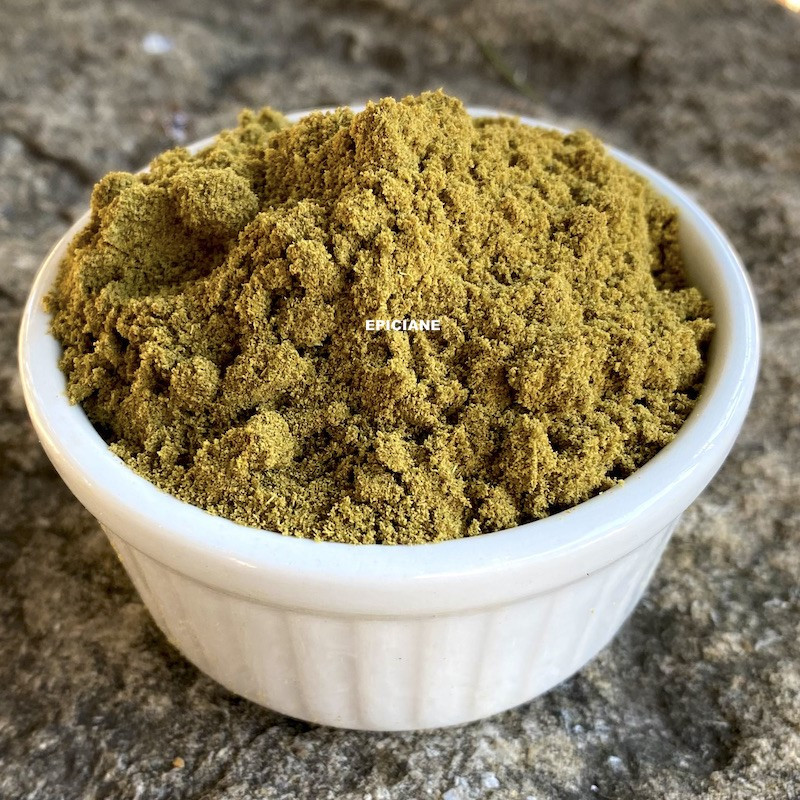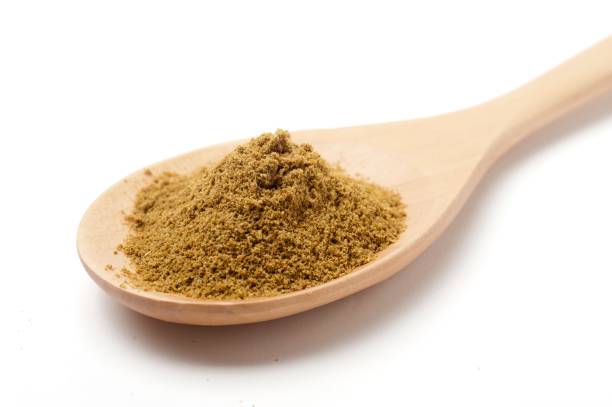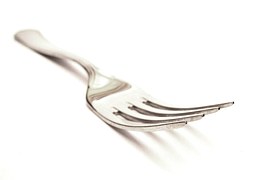
Reference: 00029083-0001


Its rich and powerful aroma has made it famous worldwide.
It is an essential ingredient in North African cuisine, perfectly pairing with vegetables (carrots, chickpeas, fava beans), cheeses, and meats (lamb).
 Delivery
Delivery
Mondial Relay
 Returns
Returns
See conditions
 Payments
Payments
100% secure
Delivered in a resealable pouch
 The seeds are ground to create ground cumin. It is a key ingredient in numerous blends like curries, chili, garam masala, massalé, ras-el-hanout, as well as in many dishes like tajines and even gazpachos.
The seeds are ground to create ground cumin. It is a key ingredient in numerous blends like curries, chili, garam masala, massalé, ras-el-hanout, as well as in many dishes like tajines and even gazpachos.
Cumin’s aroma is intense and heady, and can quickly dominate a dish if overused. Traditionally, it is paired with dishes featuring lamb, vegetables (carrots, zucchini, chickpeas, fava beans, etc.), soups, poultry, and even fish. A few pinches in a vinaigrette can give it a delightful nutty aroma! It can also be combined with caraway in certain couscous blends. In fact, it is often confused with caraway due to their similar-looking seeds, even though their flavors are distinct.
When whole, cumin seeds pair wonderfully with cheeses like Gouda and Edam (just like caraway!), and can even be added to bread.
Cumin is also renowned for aiding digestion. The Greeks and Egyptians of antiquity already used it for this benefit.

Origin: Syria
Scientific name: Cuminum cyminum
Nicknames: Moroccan cumin, false anise, white cumin.
Cumin is an annual herbaceous plant from the Apiaceae (Umbelliferae) family, the same family as parsley and many other culinary plants. It is unrelated to black cumin, which is actually nigella, nor to caraway, with which it is often confused due to the seeds’ similar appearance.
 It is a plant native to Southeast Europe, also found in North Africa and the Middle East, where it likely originated, as well as in many countries with warm climates. Cumin thrives in Mediterranean and sunny climates with rich but not overly moist soils. The plant grows to about 30 cm tall, with slender leaves. The seeds, which are consumed either whole or ground, are harvested when mature and brown.
It is a plant native to Southeast Europe, also found in North Africa and the Middle East, where it likely originated, as well as in many countries with warm climates. Cumin thrives in Mediterranean and sunny climates with rich but not overly moist soils. The plant grows to about 30 cm tall, with slender leaves. The seeds, which are consumed either whole or ground, are harvested when mature and brown.
°°°
Cumin is probably native to the Mediterranean basin, the Nile Valley, or Asia Minor, where evidence of its use dates back at least 5,000 years. In ancient Egypt, its medicinal properties were already recognized, and pharaohs’ tombs were scattered with its seeds.
In the Bible, cumin was used as currency to pay debts, and in the Middle Ages, serfs used it to buy their freedom.
In ancient Rome, the plant was so valuable that it was guarded!
In India, women in harems smoked it mixed with cardamom and cloves for its narcotic effects at high doses.
Its name has Semitic origins, and in the Middle Ages in Europe, it appeared in recipes. It was believed that carrying a small sachet of seeds protected against bad luck and witches.
English: Cumin German: Kreuzkümmel
***
Data sheet
 Anne Marie P.
Anne Marie P.
Incontournable dela cuisine méditerranéenne

 Anne Marie P.
Anne Marie P.
Incontournable dela cuisine méditerranéenne

Reference: 00029083-0001
Reference: 20818002
Reference: 20701706
Reference: 00036306-0001
Reference: 3N7201902
Reference: 20211003
Reference: 10N7738802
Reference: anisvertM
Reference: 2071570
Reference: 20721302
Reference: 3N7153402
Reference: 00723801
Reference: 00029083-0001
Reference: 20815801
Reference: badianeM
Reference: 00033929-0001
Reference: 208033101
Reference: 3N7137901
Reference: 20721301

Its rich and powerful aroma has made it famous worldwide.
It is an essential ingredient in North African cuisine, perfectly pairing with vegetables (carrots, chickpeas, fava beans), cheeses, and meats (lamb).